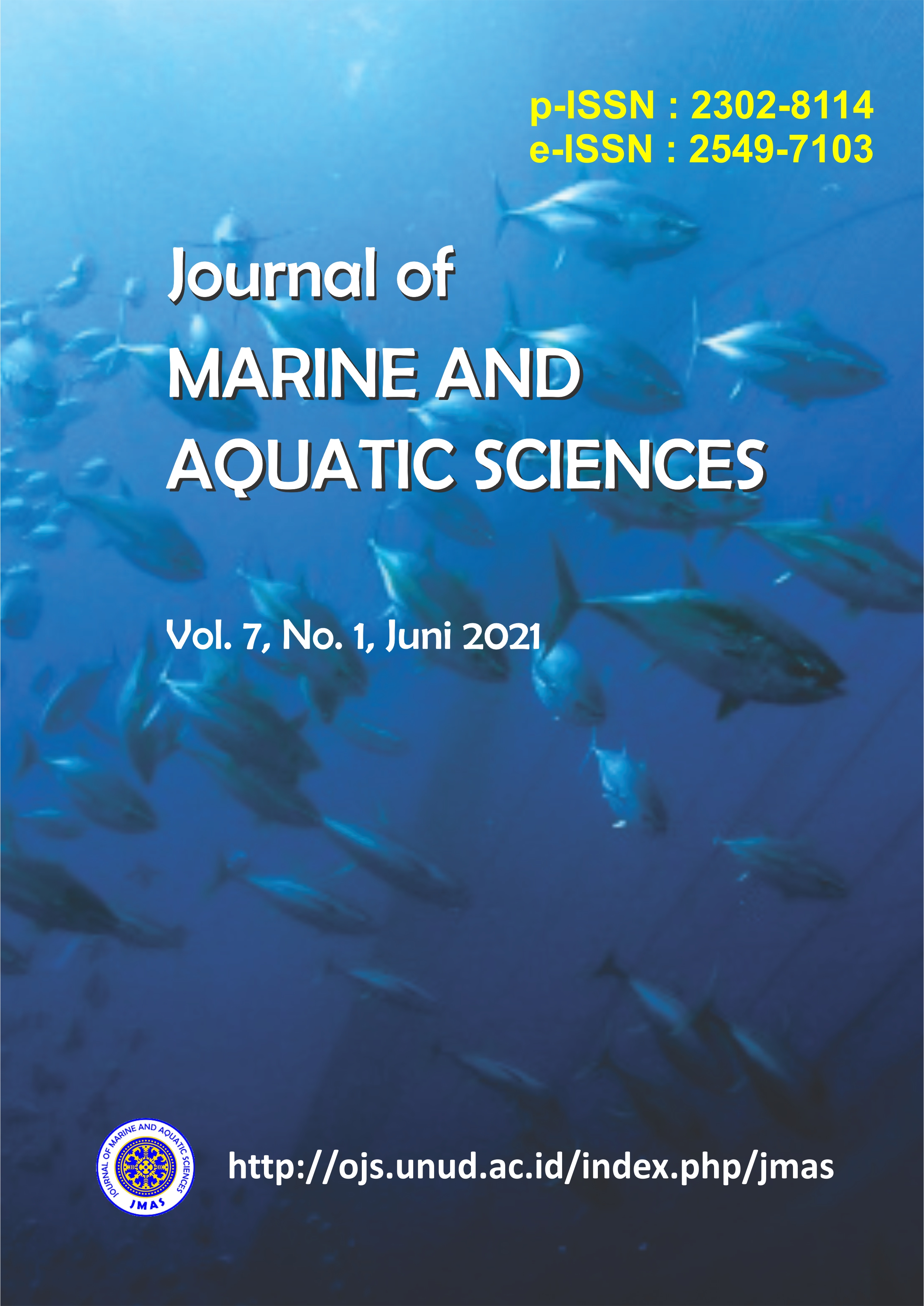Struktur Komunitas Echinodermata pada Musim Barat dan Musim Peralihan I di Ekosistem Lamun Perairan Tanjung Benoa, Bali
Abstract
Echinoderms in marine ecology have a role as deposit feeders. This shows the diversity of the Echinoderms phylum found in seagrass ecosystems. Seagrass beds serve as protection and a source of nutrients that maintain the food chain. Tanjung Benoa waters are located in the waters of South Bali which has a seagrass ecosystem. Echinoderms as invertebrate animals can be influenced by abiotic factors, namely salinity and temperature which are affected by the season. This study aims to determine changes in the structure of the Echinodermata community in the western and transitional seasons I in seagrass ecosystems and determine the environmental factors that influence the structure of the Echinoderms community in the waters of Tanjung Benoa. Echinoderms data collection method used is the Underwater Visual Census (UVC) method. Data is taken by using purposive sampling technique. The results showed that in both seasons, the western season and the transitional season I, the phylum of Echinoderms found consisted of 4 classes namely Holothuroidea, Ophiuroidea, Echinoidea and Asteroidea. The diversity index and uniformity of the Ecinodermal phylum found in both seasons shows stable diversity and uniformity. Based on the index of dominance there is one genus that dominates, namely the genus Diadema. Based on the analysis of PCA in the west season, the density of Echinoderms is influenced by phosphate, nitrate, DO, salinity, pH and temperature. Whereas in the transitional season I density is influenced by phosphate, salinity, temperature, nitrate and pH.
Downloads

This work is licensed under a Creative Commons Attribution 3.0 International License.
Copyright 2012 - 2023 Journal of Marine and Aquatic Sciences (JMAS)
Published by Fakultas Kelautan dan Perikanan Universitas Udayana, Denpasar, Bali, Indonesia
JMAS (p-ISSN 2302-8114; e-ISSN 2549-7103)


